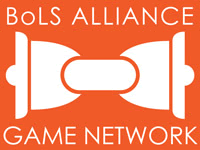They were trying out a scenario they are working on for the tournament. I think it has promise but needed massaging. I really do enjoy watching their videos even if they do play a bit fast and loose with the rules. Their studio is a constant source of inspiration to me.
There were four main things that came up in the process of playing the scenario.
- There were two objectives in each deployment zone, so each side got two of the objectives right off. This is fine, but they might as well not have played with these objectives. It basically made it a five objective game instead of a nine objective game.
- They had problems when some objectives were right next to a wall. Do you count as contesting the objective if you're within three inches but on the other side of the wall?
- They ended the game and called it a draw, even though one side had been wiped off the table.
- Minimal troops choices for one side led to a house rule that any foot infantry could grab an objective. This ended working out fine for them in this specific instance, but isn't very generic.
Setup.
- Place d6+3 objective markers, each mounted on a 30mm or 50mm base.
- Each player rolls a d6. Highest die roll decides who places the first objective.
- Each objective marker must be further than 20 inches from a short table edge.
- Each objective marker must be further than 8 inches from another objective.
- Objectives may not be placed in impassable terrain.
Deployment
- Determine who goes first as described in the WH40K rulebook.
- Instead of choosing a long table edge, the winner of the roll chooses a short table edge.
- Each player's deployment zone extends 15" from their short table edge.
Scoring
- You control an objective if you have a troops choice model in base to base contact with one of the objectives.
- Models who are fleeing, pinned or who are part of units that are engaged in close combat cannot control objectives.
- Starting on the second turn, at the end of your opponents turn, remove any objectives that you control from the board. You score one victory point for each of these objectives.
A unit may only control one objective at a time. If models in a unit are touching more than one objective, the controlling player must declare which objective they are controlling after the model comes into base contact with the objective.
Ending the Game.
- Game ends per the rules in the WH40K rulebook. The winner is the player with the most victory points.
- Player automatically loses when the last of his models are destroyed.
I think this solves some of the problems they were having, and makes the scenario playable for all comers. Let's go over some of the decisions I made.
- Putting the objectives further than 20 inches from the short table edges means each objective is important, not just the five that end up in the center. It keeps objectives from being nabbed by troops on the first turn except perhaps scouts and first turn deep strikers. Simply waiting until the second turn to start getting victory points gives slower armies (or demons) a chance. Keeping them 8 inches away from each other at least gives lip service to forcing players to move once they've taken one objective, although in practice eight inches isn't all that far. I originally wanted to do twelve inches, but the possibility of nine objectives in a 48x32 could have led to some objectives being impossible to place.
- The objective markers in the videos were quite large. Specifying base to base contact solves the wall problem. If you want to get your opponent off an objective, you've got to get in there.
- Remember kids, if you table your opponent, you automatically win. This is an important rule, even aside from the sense it seems to make. In objective games, especially ones with random turn length, it is very tempting for a player to send a unit on a suicide run to nab or steal an objective. The tabling rule leaves the option open to do this but makes it carry a certain amonut of risk. Just throwing away fast units in order to claim all the objectives early in the game could leave you vulnerable to being tabled by your opponent. If you're going to attempt such a strategy you have to think it through and time it right.
- Army composition is part of the game. The Blood Angels player in this game decided to go with an elite and HQ heavy force. This is a perfectly valid option for building an army. It's a gross killing machine full of power and artificer armored death dealing maniacs. It's great in kill points, but for objective games it's at an appropriate disadvantage. Sure, we'd all like to run armies with two scout squads and maxed out terminators with thunderhammers led by Marneus and Pedro Kantor. And you can. But it's going to be an uphill battle to claim objectives. That's why the rulebook only allows troops to claim objectives. Ideally, it leads to more balanced army composition.
Tomorrow is game night, and if Snowmageddon stays away I might have a chance to test this scenario out. Looking forward to it, and special thanks to Blue Table Painting for inspiring this article.



Great article! I won't hammer Ren too much for his army or the house rules to compensate because at the beginning of the video they said something to the effect that those were the only models he had painted. I can't believe how effective it was at killing orcs though!
ReplyDeleteAnd let's not forget that the orc player just had his squadron of FW models left on the table too (a formation which normally can't be taken in a game of 40k).